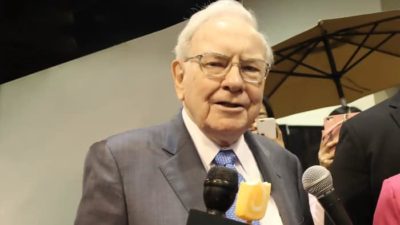If you're interested in investing in ASX shares and have dedicated some effort to doing some research, no doubt you've come across advice that will urge you to build a 'diversified' portfolio.
Diversification is indeed one of the fundamental considerations when investing in the share market. It will always be riskier to have your wealth tied up in one or two companies as opposed to 10 or 20.
However, if one is just starting out on an investing journey, one might find it difficult to diversify. After all, it's pretty hard not to put all of one's eggs in one basket when you are deciding on what your first share might be.
So, today, let's discuss two ways an investor can build a diversified portfolio from scratch in just one year.
How to build a diversified ASX share portfolio in one year
The first way to build out a diversified share portfolio in 12 months is by using index funds. Index funds are single investments that represent entire markets. Or, in some cases, many markets. Last month, I wrote about three ASX index funds an investor can buy, which can form a diversified portfolio between them.
Those index funds were the Vanguard Australian Shares Index ETF (ASX: VAS), the iShares S&P 500 ETF (ASX: IVV), and the Vanguard All-World ex-U.S. Shares Index ETF (ASX: VEU).
VAS is an exchange-traded fund (ETF) that tracks the largest 300 shares listed on the ASX, weighted by market capitalisation. This includes everything from Commonwealth Bank of Australia (ASX: CBA) and Telstra Group Ltd (ASX: TLS) to Coles Group Ltd (ASX: COL) and JB Hi-Fi Ltd (ASX: JBH).
Similarly, IVV is an index fund that does something similar, only for the largest 500 stocks listed in the United States. Again, that's everything from Apple and Microsoft to Colgate-Palmolive and Ford Motor Company.
Meanwhile, the VEU ETF covers dozens of other countries' stock markets outside the USA. You'll be getting British, Japanese, and Chinese stocks, as well as those from France, India, Taiwan, Mexico, and Malaysia, among many others.
Together, these three ETFs will get you about as diversified an ASX portfolio as one could hope for. Normally, on the ASX, $500 is the minimum amount one needs to invest in a stock or ETF. If you are able to scrape together $1,500 over the course of one year to buy each of these ETFs, you'll be off to a great start with your investing journey, with diversification built into your portfolio from the start.
The harder road
However, some investors might not find this ASX ETF portfolio appealing and want to build a portfolio of individual stocks. There's nothing wrong with this approach, either. But it may take some time before you'll be properly diversified.
Here at the Motley Fool, we usually recommend that investors have between 15 and 25 individual stocks in an ASX portfolio to strike a good balance between diversification and 'over-diversification'. That means you'll need at least $7,500 if you wish to invest $500 in 15 stocks.
If you wish to pursue this path, I would advise starting with a hunt for the best ASX shares across multiple market sectors. Try and find a top tech stock or two, for example, as well as a leader in the consumer staples space, the healthcare sector, or perhaps the mining industry. Supplement these with a telco, a retailer or two, or a utility share. You might even want to look at a bank.
You want to have a portfolio that is not significantly exposed to a sector-wide trend. To illustrate, it's not 'diversification' to buy four different bank stocks, as any crisis in the banking sector is likely to affect all four fairly equally (and your portfolio brutally).
Investors can also add international stocks for an added diversification boost. For example, you might find Amazon stock appealing for your diversified portfolio or perhaps Warren Buffett's Berkshire Hathaway.
If you're really worried about diversification when building out this portfolio, you can always start with an index fund like VAS or IVV and then expand to a portfolio of individual stocks from there. Having VAS and CBA in a blooming portfolio will offer a lot more diversification than CBA and Telstra, for example.









